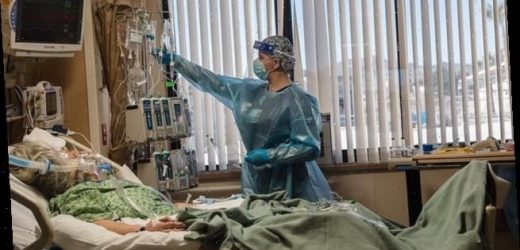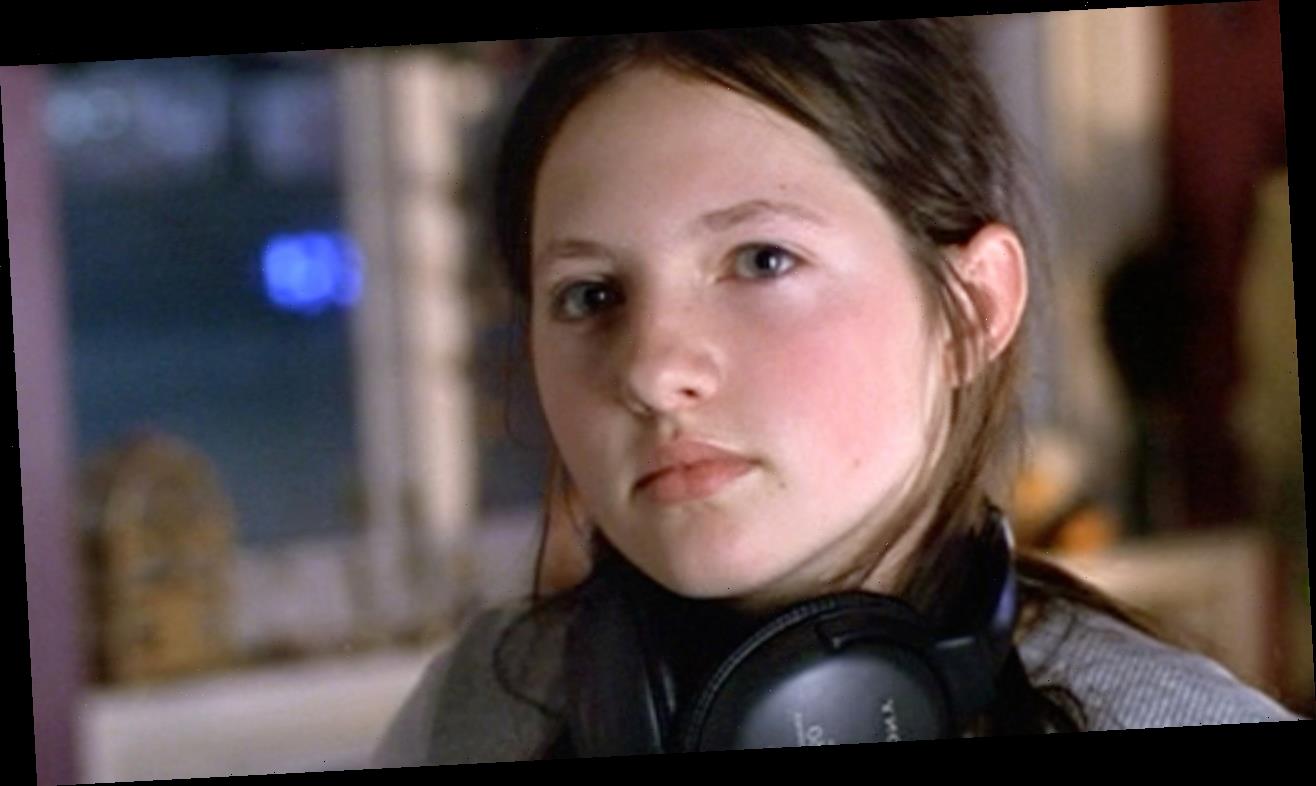Covid-19 patients admitted to very full intensive care wards are 19% more likely to die – the equivalent of being up to 11 YEARS older
- Researchers from UCL have analysed data from 4,032 Covid-19 patients in ICU
- Those in units at over 85% capacity were 19% more likely to die
- But when ICU capacity was lower than 45%, mortality risk decreased by 25%
With total coronavirus cases in the UK now exceeding 3million and 3,500 patients on ventilators, hospitals across the country are stretched to their limits.
Now, a worrying new study reveals Covid-19 patients admitted to very full intensive care units are up to 19 per cent more likely to die than if the ICUs were less busy.
The researchers say that is an increase in risk equivalent to being up to 11 years older, according to the researchers.
The researchers hope the findings will underline the urgency of both vaccinating vulnerable groups as soon as possible and reducing Covid community transmission.
Scroll down for video
A worrying new study has revealed that Covid-19 patients admitted to very full intensive care units are up to 19 per cent more likely to die than if the ICUs were less busy (file photo)
In the study, published on medRxiv, researchers from University College London (UCL) analysed data from 4,032 Covid-19 patients who were admitted to NHS Intensive Care Units (ICU) between April 2 and June 1.
The analysis revealed that when ICU reached 85 per cent capacity, 38.4 per cent of patients admitted died. This mortality rate is 19 per cent higher than the baseline figure for ICU capacity of between 45 and 85 per cent full.
Figures show that when ICU capacity was lower than 45 per cent, the risk of death decreased by 25 per cent.
Dr Bilal Mateen from UCL, and author of the study, said: ‘To put into context as to why these results are so important – at the end of 2020, 37 of 123 recorded NHS trusts were experiencing over 85 per cent ICU bed occupancy; 11 of these were completely full and the situation has only got more extreme.
‘Our results show the association between risk of death and bed occupancy is linear and as occupancy increases the worse patients’ outcomes become.
‘In the worst case scenario (when mechanical ventilator ICU occupancy goes from zero to 100 per cent) a patient’s risk of death nearly doubles, which suggests that every per cent counts and hospital strain must be reduced.’
Just 43 per cent of people who develop Covid-19 symptoms are getting a test, according to shock new data.
An ongoing UCL study has been tracking the social aspect of the pandemic and how the general public has been behaving and adhering to the ever-changing rules and guidance.
It started in mid-March 2020 and regularly quizzes more than 70,000 Britons about their life in lockdown.
Data released today shows a third of people requested a test every time they developed symptoms, one in ten got a test only on some of the occasions when they had symptoms and 57 per cent never requested a test despite having symptoms.
Dr Harrison Wilde, first author of the study, said: ‘What is unique about this study is that we’ve been able to put a number on the increased risk to patients for the first time in the context of surge capacity.
‘For example, if a 40 year-old person is admitted to a full hospital, they effectively have the increased health risk of a 51 year-old.
‘Unfortunately the association between occupancy and mortality risk is much larger than we ever suspected and with more people than ever being admitted to full hospitals we need to act with more urgency.’
The team hopes the findings will underline the urgency of vaccinating vulnerable groups, as well as reducing Covid transmission in the community.
Professor Christina Pagel, co-author of the study, added: ‘We are often warned about the NHS being overwhelmed and we know that frontline staff, particularly those working in intensive care units, are being stretched and under a lot of stress.
‘This paper highlights for the first time that putting such strain on ICUs during pandemic peaks does, sadly, mean that that chances of someone dying in intensive care are higher.
‘Our work underlines the urgency of both vaccinating vulnerable groups as soon as possible and reducing Covid transmission in the community to relieve pressure on intensive care – both in England which is currently experiencing an awful second wave and in many other countries where cases and hospital admissions are rising steeply.’
NHS figures show critical wards are busier than this time last year despite 700 extra beds
Official NHS figures show that intensive care wards across the country are struggling more this winter even though an average 743 extra beds per day have been made available to try and cope with Covid patients.
NHS England data shows that, in the last week of December, there were 743 more intensive care beds available than in the same week of 2019 – 4,394 compared to 3,651.
But in the same week there were, on average, 828 more patients in critical care – 3,340 compared to 2,512 in the December 2019 – suggesting the strain of Covid-19 is bigger than hospitals had prepared for.
Many of the extra beds are in London – 253 of them – but even this hasn’t been enough to stave off the surge in coronavirus patients.
Over the Christmas week, two hospitals’ ICU wards were 100 per cent full, and another 11 out of 18 were more than 90 per cent full and had fewer than six beds each to use for any new patients.
Grim reports have emerged from the capital in recent days, with some of its major hospitals being forced to treat Covid-19 patients in ambulances outside or dismantling wards to make space for more intensive care patients.
Although the city has a huge Nightingale Hospital at the Excel Centre, nursing unions say there aren’t enough staff to man it and equipment has been removed since it was put on standby in the summer.
NHS bosses warn that even hospitals that aren’t full or almost full are struggling more than usual because of staff sickness rates and the fact that beds have to be spread out more across the hospital because of social distancing.
Source: Read Full Article



